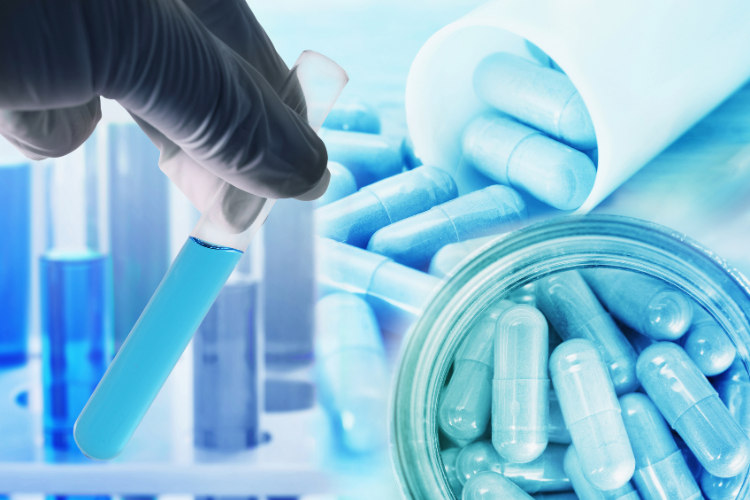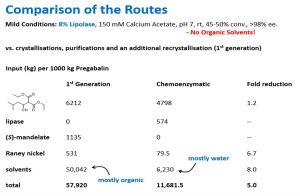
Enzymes for Biocatalysis and Biomanufacturing: Greener Routes to Chemical and Pharmaceutical Products
Blog by Dr. Nick Weise PFHEA, Senior Lecturer (Chemistry & Medical Education)
Enzymes are biological molecules that are present in all living organisms, from single cell bacteria, to trees, fungi, fish and even humans. In fact, most people will associate them with the digestion of food in the mouth, stomach and gut, or even in biological washing powders to breakdown stains on clothes.
They work by catalysing reactions or causing reactions to go faster under certain conditions. For example, with food in the body or food stains on clothes, the building blocks of the chemicals would break down on their own over a very long time. The presence of enzymes allows the breakdown to proceed quickly, without the need for high temperature, pressure or extreme conditions. As enzymes are biological in origin (produced by living things) and perform catalysis (the speeding up of reactions), they are known as biocatalysts.
The breakdown of unwanted, waste products by enzymes is desirable in industry. Trying to do the same reactions without them would usually require long time scales, high energy input or the use of hazardous, environmentally damaging or unsustainably resourced chemical reagents. However, enzymes can also catalyse reactions that bring together starting materials or build up complex molecules, such as drugs for various diseases.
In this way, the chemical needs of the developed and developing world can be met with reduced pollution and potential harm to human, animal and plant life. The production of such chemicals using enzymes as biological catalysts is known as biomanufacturing. An example is providing below where lipolase is being used to green the manufacturing of the drug pregabalin, used to treat epilepsy and anxiety and other nervous pains.

An example of the fold reduction in input and waste achieved by including a step catalysed by an enzyme (lipase/lipolase) instead of a purely chemical 1st generation route for the production of the pharmaceutical pregabalin. Org. Process Res. Dev. 2008, 12, 3, 392–398 https://doi.org/10.1021/op7002248. More information can be found in the linked video: https://www.youtube.com/watch?v=6bkRwl7foMY
In the Department of Chemistry at The University of Manchester, our undergraduates are trained to be the sustainable leaders of tomorrow’s manufacturing industries through the second year CHEM20711 module, Contemporary Themes in Chemistry. The Industrial Biotechnology section features asynchronous video delivery of intended learning outcome content by industrial partners and on campus Feedback Classes, where students collaboratively explore innovations in biocatalysis published that year in the primary chemical literature, centred around an employability example.
However, there are other ways to engage students in this topic, particularly those in biological, medical and other healthcare sciences, in the form of literature projects. For example, in the 2023/24 academic year, two of the literature review titles provided for the 2nd Year Medical Student Personal Excellence Pathways are centred around recent advances in renewable biocatalytic therapies for the treatment of different pathologies.
Given the broad expertise of our students, such projects can be framed in terms of sustainable pharmacy / pharmaceuticals, renewable therapies or even biotechnology, applied microbiology and molecular biosciences.
The content in this blog aligns with the following United Nations Sustainable Development Goals: Good health and wellbeing (3), Industry, innovation and infrastructure (9) and Climate action (13).
Sign up to receive the FBMH ES newsletter by contacting srbmh@manchester.ac.uk. Read our previous editions: June and October 2023
To find out more about Environmental Sustainability: visit the Faculty’s intranet page, website or contact srbmh@manchester.ac.uk . For more information on Environmental Sustainability at the University watch this short film or visit their website.

0 Comments